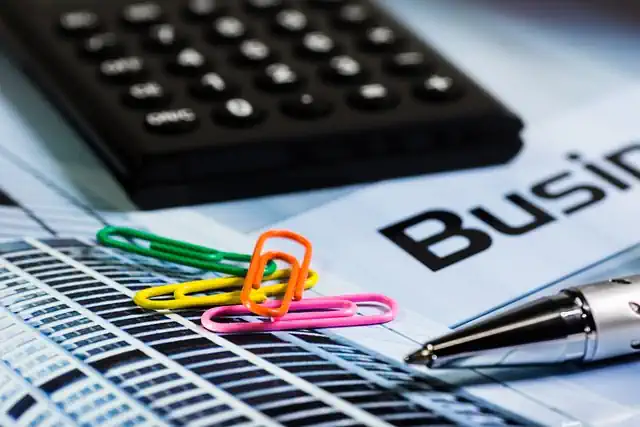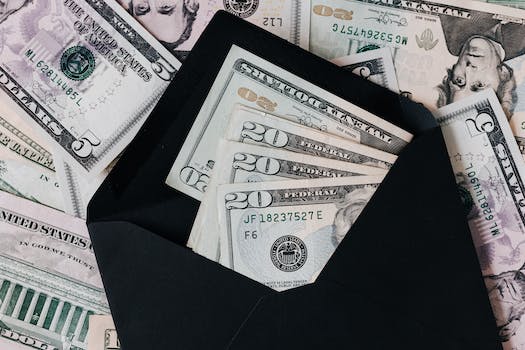How To Save Money Electricity
Introduction

Saving money on electricity is a great way to reduce your monthly expenses and help the environment. There are many simple and effective ways to reduce your electricity usage without sacrificing comfort or convenience. In this article, we will discuss some tips and tricks on how to save money on electricity.
Switch to LED Lighting
Are you tired of high electricity bills? Do you want to save money on your monthly expenses? One way to do this is by switching to LED lighting. LED lights are energy-efficient and can help you save money on your electricity bill. In this article, we will discuss how to save money on electricity by switching to LED lighting.
Firstly, let’s understand what LED lighting is. LED stands for Light Emitting Diode. Unlike traditional incandescent bulbs, LED lights do not use a filament to produce light. Instead, they use a semiconductor to convert electricity into light. This makes them more energy-efficient and longer-lasting than traditional bulbs.
LED lights use up to 80% less energy than traditional bulbs. This means that you can save a significant amount of money on your electricity bill by switching to LED lighting. Additionally, LED lights last up to 25 times longer than traditional bulbs. This means that you will not have to replace them as often, which can also save you money in the long run.
To switch to LED lighting, you will need to replace your existing bulbs with LED bulbs. LED bulbs are available in a variety of shapes and sizes, so you should be able to find a bulb that fits your existing fixtures. You can purchase LED bulbs at most hardware stores or online.
When purchasing LED bulbs, it is important to look for bulbs that are Energy Star certified. Energy Star is a program that certifies energy-efficient products. Energy Star certified LED bulbs are tested and verified to meet strict energy efficiency guidelines. By choosing Energy Star certified bulbs, you can be sure that you are getting the most energy-efficient bulbs available.
Once you have purchased your LED bulbs, it is time to install them. Installing LED bulbs is easy and can be done in just a few minutes. Simply turn off the power to the fixture, remove the old bulb, and screw in the new LED bulb. Be sure to dispose of the old bulb properly, as it contains hazardous materials.
LED lighting is not only energy-efficient, but it also has other benefits. LED lights produce less heat than traditional bulbs, which can help keep your home cooler in the summer. Additionally, LED lights do not contain hazardous materials like mercury, which can be found in traditional bulbs.
In conclusion, switching to LED lighting is a great way to save money on your electricity bill. LED lights are energy-efficient, long-lasting, and easy to install. By choosing Energy Star certified bulbs, you can be sure that you are getting the most energy-efficient bulbs available. So, if you want to save money on your electricity bill, consider switching to LED lighting today.
Unplug Electronics When Not in Use
Are you tired of seeing your electricity bill skyrocket every month? Do you want to save money on your energy costs? Well, you’re in luck because there are many ways to reduce your electricity usage and save money. One of the easiest ways to do this is by unplugging electronics when they’re not in use.
Many people don’t realize that even when electronics are turned off, they still use electricity. This is called standby power, and it can account for up to 10% of your electricity bill. By unplugging your electronics when you’re not using them, you can save money and reduce your energy consumption.
So, what electronics should you unplug? Well, anything that has a standby mode or a power adapter should be unplugged when not in use. This includes things like your TV, computer, printer, game console, and even your phone charger. These devices continue to use electricity even when they’re not in use, so unplugging them can make a big difference in your energy usage.
Of course, unplugging everything every time you’re done using it can be a hassle. That’s why power strips are a great investment. You can plug multiple devices into one power strip and then turn off the strip when you’re not using any of the devices. This makes it much easier to manage your electronics and reduce your energy usage.
Another way to reduce your energy usage is by using energy-efficient electronics. Look for devices that have the ENERGY STAR label, which means they meet energy efficiency guidelines set by the U.S. Environmental Protection Agency. These devices use less energy than standard electronics, which can save you money on your electricity bill.
In addition to unplugging your electronics, there are other things you can do to reduce your energy usage and save money. For example, you can adjust your thermostat to a more energy-efficient temperature. In the winter, set your thermostat to 68 degrees Fahrenheit when you’re home and lower it when you’re away or sleeping. In the summer, set your thermostat to 78 degrees Fahrenheit when you’re home and raise it when you’re away or sleeping.
You can also switch to energy-efficient light bulbs, which use less energy and last longer than traditional bulbs. LED bulbs are a great option because they use up to 75% less energy than traditional bulbs and can last up to 25 times longer.
Finally, make sure you’re using your appliances efficiently. For example, only run your dishwasher when it’s full, and use the energy-saving mode on your washing machine and dryer. These small changes can add up to big savings on your electricity bill.
In conclusion, unplugging your electronics when they’re not in use is an easy and effective way to save money on your electricity bill. By investing in power strips and energy-efficient electronics, you can make it even easier to manage your energy usage. And don’t forget to make other small changes, like adjusting your thermostat and using energy-efficient light bulbs, to further reduce your energy consumption. With these tips, you’ll be on your way to saving money and reducing your carbon footprint.
Use a Programmable Thermostat
Are you tired of high electricity bills? Do you want to save money on your monthly expenses? One way to do this is by using a programmable thermostat. Not only will it help you save money, but it will also make your home more energy-efficient.
A programmable thermostat allows you to set the temperature in your home according to your schedule. For example, if you are at work during the day, you can set the thermostat to turn off the air conditioning or heating while you are away. This will save you money on your electricity bill because you are not using energy when you don’t need it.
Another benefit of using a programmable thermostat is that it can help you maintain a consistent temperature in your home. This is important because it can help you avoid sudden temperature changes that can be uncomfortable and can also cause your heating or cooling system to work harder than it needs to. By maintaining a consistent temperature, you can also reduce wear and tear on your HVAC system, which can save you money on repairs and replacements in the long run.
When choosing a programmable thermostat, there are a few things to consider. First, you should look for a thermostat that is compatible with your HVAC system. Some thermostats are designed for specific types of systems, so it’s important to choose one that will work with yours. You should also consider the features that are important to you, such as the ability to control the thermostat remotely or to set different temperatures for different rooms in your home.
Once you have chosen a programmable thermostat, it’s important to set it up correctly. This means programming it according to your schedule and preferences. For example, if you are at work during the day, you may want to set the thermostat to turn off the air conditioning or heating while you are away. You can then program it to turn on a few minutes before you arrive home so that your home is at a comfortable temperature when you get there.
It’s also important to regularly check and adjust your thermostat settings. This is especially important if your schedule changes or if the weather outside is particularly hot or cold. By adjusting your thermostat settings, you can ensure that your home is always at a comfortable temperature while also saving money on your electricity bill.
In addition to using a programmable thermostat, there are other things you can do to save money on your electricity bill. For example, you can turn off lights and electronics when you are not using them, use energy-efficient light bulbs, and unplug appliances when they are not in use. By making these small changes, you can reduce your energy consumption and save money on your monthly expenses.
In conclusion, using a programmable thermostat is a great way to save money on your electricity bill while also making your home more energy-efficient. By choosing the right thermostat, setting it up correctly, and regularly adjusting your settings, you can ensure that your home is always at a comfortable temperature while also saving money on your monthly expenses. So why not give it a try and see how much you can save?
Seal Air Leaks in Your Home
Are you tired of paying high electricity bills every month? Do you want to save money on your energy bills? If yes, then you have come to the right place. In this article, we will discuss some simple yet effective ways to save money on electricity. One of the most effective ways to save money on electricity is to seal air leaks in your home.
Air leaks in your home can cause your heating and cooling systems to work harder than they need to, which can result in higher energy bills. Sealing air leaks is a simple and cost-effective way to reduce your energy bills and make your home more comfortable.
The first step in sealing air leaks is to identify them. Common areas where air leaks occur include windows, doors, electrical outlets, and plumbing fixtures. You can use a candle or incense stick to detect air leaks. Hold the candle or incense stick near the suspected area, and if the flame or smoke moves, it indicates an air leak.
Once you have identified the air leaks, the next step is to seal them. You can use caulking or weatherstripping to seal air leaks around windows and doors. Caulking is a flexible material that can be used to fill gaps and cracks around windows and doors. Weatherstripping is a material that can be used to seal gaps around doors and windows.
For electrical outlets and plumbing fixtures, you can use foam gaskets to seal air leaks. Foam gaskets are easy to install and can be purchased at any hardware store. Simply remove the outlet or fixture cover, place the foam gasket over the outlet or fixture, and replace the cover.
Another way to seal air leaks is to insulate your home. Insulation helps to keep your home warm in the winter and cool in the summer. It also helps to reduce energy bills by preventing air leaks. You can insulate your home by adding insulation to your attic, walls, and floors.
In addition to sealing air leaks, there are other ways to save money on electricity. One way is to use energy-efficient appliances. Energy-efficient appliances use less energy than traditional appliances, which can result in lower energy bills. When shopping for appliances, look for the Energy Star label, which indicates that the appliance meets energy efficiency standards.
Another way to save money on electricity is to use LED light bulbs. LED light bulbs use less energy than traditional incandescent bulbs and last longer. They may cost more upfront, but they will save you money in the long run.
In conclusion, sealing air leaks in your home is a simple and cost-effective way to save money on electricity. By identifying and sealing air leaks, you can reduce your energy bills and make your home more comfortable. In addition to sealing air leaks, using energy-efficient appliances and LED light bulbs can also help you save money on electricity. So, start sealing those air leaks today and start saving money on your energy bills!
Invest in Energy-Efficient Appliances
Are you tired of seeing your electricity bill skyrocket every month? Do you want to save money on your energy bills? Well, you’re in luck because there are many ways to reduce your energy consumption and save money on your electricity bill. One of the most effective ways to do this is by investing in energy-efficient appliances.
Energy-efficient appliances are designed to use less energy than traditional appliances, which means they can help you save money on your electricity bill. These appliances are designed to be more efficient in their use of energy, which means they use less energy to perform the same tasks as traditional appliances. This can result in significant savings on your energy bills over time.
When shopping for energy-efficient appliances, look for appliances that have the ENERGY STAR label. This label indicates that the appliance meets strict energy efficiency guidelines set by the U.S. Environmental Protection Agency (EPA). ENERGY STAR appliances are designed to use less energy than traditional appliances, which means they can help you save money on your energy bills.
One of the most energy-intensive appliances in your home is your refrigerator. If your refrigerator is more than 10 years old, it may be time to replace it with a new, energy-efficient model. Newer refrigerators are designed to be more energy-efficient than older models, which means they use less energy to keep your food cold. This can result in significant savings on your energy bills over time.
Another energy-intensive appliance in your home is your washing machine. If your washing machine is more than 10 years old, it may be time to replace it with a new, energy-efficient model. Newer washing machines are designed to use less water and less energy than older models, which means they can help you save money on your energy bills.
When shopping for energy-efficient appliances, it’s important to consider the upfront cost of the appliance as well as the long-term savings. Energy-efficient appliances may cost more upfront than traditional appliances, but they can help you save money on your energy bills over time. In fact, the savings from energy-efficient appliances can often offset the higher upfront cost within a few years.
In addition to investing in energy-efficient appliances, there are other steps you can take to reduce your energy consumption and save money on your electricity bill. For example, you can turn off lights and electronics when you’re not using them, use a programmable thermostat to control your heating and cooling, and seal air leaks in your home to prevent energy loss.
In conclusion, investing in energy-efficient appliances is one of the most effective ways to save money on your electricity bill. ENERGY STAR appliances are designed to use less energy than traditional appliances, which means they can help you save money on your energy bills. When shopping for energy-efficient appliances, it’s important to consider the upfront cost as well as the long-term savings. By taking steps to reduce your energy consumption and investing in energy-efficient appliances, you can save money on your electricity bill and reduce your environmental impact.
Reduce Water Heater Temperature
Are you tired of high electricity bills? Do you want to save money on your monthly expenses? One way to do this is by reducing the temperature of your water heater. In this article, we will discuss how to save money on electricity by lowering the temperature of your water heater.
Firstly, it is important to understand how your water heater works. Most water heaters have a thermostat that controls the temperature of the water. The thermostat is usually set at 140 degrees Fahrenheit, which is the recommended temperature for killing bacteria. However, this temperature is not necessary for everyday use and can be lowered to save energy and money.
Lowering the temperature of your water heater can save you up to 10% on your electricity bill. For every 10 degrees Fahrenheit that you lower the temperature, you can save 3-5% on your bill. This may not seem like a lot, but over time, it can add up to significant savings.
To lower the temperature of your water heater, you will need to locate the thermostat. This is usually located on the front of the water heater, behind a panel. Once you have located the thermostat, you can adjust the temperature using a flathead screwdriver. It is recommended to lower the temperature to 120 degrees Fahrenheit, which is still hot enough for everyday use.
It is important to note that lowering the temperature too much can lead to bacterial growth in your water heater. Therefore, it is recommended to keep the temperature above 120 degrees Fahrenheit. Additionally, if you have a dishwasher that requires hot water, you may need to adjust the temperature accordingly.
Another way to save money on electricity is by insulating your water heater. This will help to keep the water hot for longer periods of time, reducing the need for the water heater to turn on and off frequently. You can purchase an insulation blanket from your local hardware store and install it yourself. This is a simple and cost-effective way to save energy and money.
In addition to lowering the temperature of your water heater and insulating it, there are other ways to save money on electricity. One way is by using a low-flow showerhead. This will reduce the amount of hot water that is used during a shower, saving energy and money. Another way is by washing your clothes in cold water. This will not only save energy, but it will also help to preserve the color and quality of your clothes.
In conclusion, lowering the temperature of your water heater is a simple and effective way to save money on electricity. By reducing the temperature to 120 degrees Fahrenheit and insulating your water heater, you can save up to 10% on your monthly bill. Additionally, using a low-flow showerhead and washing your clothes in cold water can further reduce your energy usage. These small changes can add up to significant savings over time. So, why not give it a try and see how much you can save?
Install Solar Panels
Are you tired of paying high electricity bills every month? Do you want to save money on your energy costs? One solution is to install solar panels on your home. Solar panels are a great way to generate your own electricity and reduce your reliance on the grid. In this article, we will discuss how to save money on electricity by installing solar panels.
First, you need to determine if your home is suitable for solar panels. The ideal location for solar panels is a south-facing roof with no shading. If your roof is shaded by trees or other buildings, it may not be suitable for solar panels. You should also consider the age and condition of your roof. If your roof needs repairs or replacement, it may be a good time to install solar panels.
Once you have determined that your home is suitable for solar panels, you need to find a reputable installer. Look for a company that has experience installing solar panels and has good reviews from previous customers. You should also get multiple quotes to compare prices and services.
The cost of solar panels can vary depending on the size of your system and the quality of the panels. However, the cost of solar panels has decreased significantly in recent years, making them more affordable for homeowners. In addition, there are government incentives and tax credits available for installing solar panels, which can help offset the cost.
After you have installed solar panels, you can start generating your own electricity. The amount of electricity you generate will depend on the size of your system and the amount of sunlight your panels receive. On sunny days, you may generate more electricity than you need, which can be sold back to the grid for a credit on your electricity bill.
One of the benefits of solar panels is that they require very little maintenance. You should clean your panels periodically to remove any dirt or debris that may reduce their efficiency. You should also monitor your system to ensure that it is generating the expected amount of electricity.
In addition to saving money on your electricity bill, installing solar panels can also increase the value of your home. Many homebuyers are interested in homes with solar panels because they offer long-term savings on energy costs.
In conclusion, installing solar panels is a great way to save money on electricity. Before you install solar panels, you should determine if your home is suitable and find a reputable installer. The cost of solar panels has decreased in recent years, and there are government incentives and tax credits available to help offset the cost. Once you have installed solar panels, you can start generating your own electricity and reduce your reliance on the grid. Solar panels require very little maintenance and can increase the value of your home. If you want to save money on your electricity bill, consider installing solar panels on your home.
Conclusion
Conclusion: To save money on electricity, it is important to be mindful of energy usage and make small changes in daily habits. This can include turning off lights and electronics when not in use, using energy-efficient appliances and light bulbs, and adjusting the thermostat to conserve energy. By making these simple changes, individuals can reduce their electricity bills and contribute to a more sustainable future.







